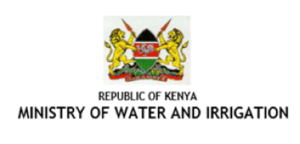
FBLN Kenya
- Home
- Flood-Based Livelihoods Network
- FBLN Kenya
Characteristics of FBL in the country and the geographical scope
Kenya has a high amount of rainfall in the highland zones and a good network of rivers. During the rainy seasons, many parts of the country experience flooding. In some places, this negatively affects the livelihoods of people. In other places however, people completely depend on floods to sustain their livelihoods. Many people use rain-fed or irrigated systems, but there are still traditional FBLS in use. Some of these schemes are very beneficial while others suffer from a combination of several environmental and/or human influences. The flood magnitude has increased over the years due to destruction and degradation of catchment areas and river migration. This has negatively influenced many FBLS in Kenya. Until recently, FBLS have not been part of irrigation development in Kenya. But fortunately, there are now several completed, ongoing and/or planned projects focusing on FBLS. Recently, a National Water Harvesting and Storage Policy has been developed to facilitate harnessing and storage of the recurrent floodwaters. The Kenyan Ministry of Water and Irrigation (MoWI) currently has a big project on the construction of water storage systems (small dams and water pans). On top of that, they are participating in a project (in partnership with MetaMeta and ICRAF) focusing on the building-up of practical knowledge and national and local capacity to systematically and comprehensively support the productive use of FBLS. Not only the Ministry, but also several government agencies, organisations and NGOs recently started focusing more on FBLS. Kenya has a huge potential for improving its FBLS, creating new beneficial FBLS and sustaining them so they are and will stay beneficial for many people.
When looking at traditional FBLS, the Tana Delta is a very interesting area. The Tana Delta is the southernmost sub-county (or constituency) of Tana River County which owns is name to the 1,000 km long Tana River running through it (of which 270 km in the sub- county, see figure 1). In the Tana Delta, many people depend on traditional FBLS both for agriculture and pastoralism. Most agricultural practices take place alongside the banks of the river (to a max of a 10 km strip on each side of the river). The main form of farming in the Tana Delta is flood-based farming (FBF). There are several types of FBF used in this area of which most are traditional and have been used for a long time. The most widely used form of FBF in the Tana Delta is floodplain agriculture (recession farming), both alongside the Tana River and the natural lakes fed by this river. Other types of FBF in the area are spate irrigation by making use of wadi’s (wadi’s are ephemeral streams that only transport water during the rainy seasons) and FBF making use of inundation canals alongside the Tana River. The Tana Delta shows some good examples of traditional FBLS in Kenya. In many other parts of Kenya however, there are no traditional FBLS. Most of these areas are arid or semi-arid and the lifestyle of its people is mainly based on pastoralism and not agriculture. Turkana and the north and south-east of Samburu are good examples of this. These parts of Kenya have an annual rainfall less than 700 mm and frequent drought years. The people there are pastoralists from origin and usually do not practice agriculture. Even though there are no traditional FBLS in these areas, there is a huge potential for it. FBLS could be used to start doing agriculture but could also be used to provide water and pastures for the livestock. There are several projects at the moment that are implementing and promoting new FBLS. Most of these projects are taking place in Turkana county by GIZ, Turkana County Government and National Irrigation Board (NIB).
Main achievements in the past years
The FBLN Kenya chapter has been active the last yeas in expanding their network and partnerships. The World Agroforestry Center (ICRAF) and the Ministry of Water and Irrigation (MoWI) Land reclamation department have partnered and worked with different organisations and institutions in the country on outputs. A database of farmers in Kajiado, Turkana and Tana River counties has been developed and maintained.Research on the status and potential of FBLS and several aspects of FBLS took place and is continuously updated. Research on the effectiveness of moisture conservation measures on yield optimisation under spate irrigation in Kamkuru county has been published. In addition, a field research based practical note on the positive effect of road runoff harvesting and agroforestry has been finalized and can be appreciated at the following link. FBLN Kenya is focusing on capacity building and has trained over 60 farmers in different counties on best FBFS practices. Also, FBFS courses have been mainstreamed in Egerton University and KEWI training programmes.
Main focus
The main focus of FBLN Kenya is capacity building, research and knowledge development, network development and support to invest programmes and policies. In March 2019, a knowledge sharing symposium was held on FBLS followed by an investment proposal writing workshop. More information on this symposium here. An assessment of the potential of FBLS in the country including a map is under development and will be one of the main inputs to determine areas to start investing.
